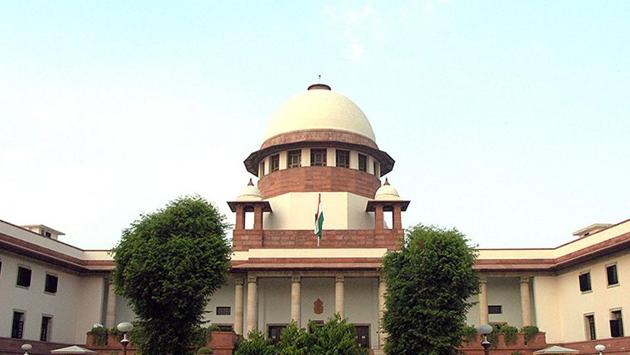The riddle of paragraph 652 in the Ayodhya order
It pins 1856 as the threshold to examine legal claims. But its final verdict goes against precisely this basis
As a Hindu, I am happy that a Ram temple will be constructed in Ayodhya. As an Indian, I am conflicted. Both identities, Hindu and Indian, have generally resided harmoniously in me. Why is it that they are jostling uneasily today?

Some historians assert that Hindu and Muslim identities are of relatively recent manufacture, a consequence of the methods employed by the British to rule India. While there is some truth to this argument, identities, once created and prevalent over a few generations, acquire a hold on individuals and groups, and provide motivations for enduring feelings and action. Thus, the reality of Hindu and Muslim identities. They are not monolithic, but, in binary situations, tend to coalesce almost completely.
So, as a Hindu, I am filled with different emotions, including anger, when I see the assaults that took place in times past on objects dear to my faith — the images of deities defaced with sword and chisel, mosques constructed at sacred places, and objects once venerated desecrated. I would be dishonest if I denied these emotions, and also a sense that people of other faiths do not understand or perhaps even try to understand these feelings. But I would be equally dishonest if I do not admit that these feelings do not last. They arise and fade away to rise again whenever I see evidence of past defilement.
If my Hindu identity derives from faith and tradition, my Indian identity comes from the Constitution and its principles, which evolved in the Indian renaissance and the freedom movement. These principles are not divorced from those that come from ancient times, but they are not always on all fours with them. Certainly, the value of equality of all, and of justice based on equality, may have been the bedrock of the teachings of many saints and seers, but it is the Constitution that has sought to operationalise them legally and politically as was never done before in India. It is here that the Supreme Court’s Ayodhya judgment has raised doubts within me as an Indian.
The 1,045-page judgment sets out in ringing tones the commitment of the Indian State to equality and justice for all. It stresses the principles on which the republic has been established. It emphasises basic truths relating to the turning of the wheels of history. And it does all this in a case of “immovable property”, where “facts, evidence and oral arguments… traversed the realm of history, archaeology, religion and the law”. After stating this, the judges immediately note, “The law must stand apart from political contestations over history, ideology and religion.” The judgment then assures that it is based only on law and evidence.
An application of the law and evidence by any court, and in any case, must be such that its clarity and logic must be obvious to not only legal experts but to all citizens. After all, as the court says “the constitution speaks …. above all to citizens who engage with it as an inseparable feature of their lives”. If this applies to the Constitution, it equally applies to all judgments, especially those of the Supreme Court. It is here that this judgment is problematic to me as a citizen.
The judgment’s paragraph 652 is of critical import. The court states: “This Court cannot entertain claims that stem from the actions of the Mughal rulers against Hindu places of worship in a court of law today.” It concludes the paragraph thus: “The acts of the parties subsequent to the annexation of Oudh in 1856 form the continued basis of the legal rights of the parties and it is these acts that the court must evaluate to decide the present dispute.”
There is no doubt that for many centuries, Hindus have held that Vishnu in His avatar as Maryada Purushottam was born in Ayodhya, and that at the site of his birth stood a grand temple. Many Hindus have fiercely held the conviction that the Babri Mosque was constructed on that site, which is an act of supreme injustice to them. The court has relied upon the Archaeological Survey of India report that concludes that a north Indian large temple-like structure was located on the site, though it does not state that the temple was destroyed to build the mosque. But the court holds as per paragraph 652 that all this simply does not matter; what does is the situation as existed in 1856-57 and the actions of the parties thereafter.
It is here that doubts come, if holding what it has in paragraph 652, there is sufficient ground even on the basis of “preponderance of probability” for the court to have a logical basis for reaching the decision that it did. The court may have decided to find a pragmatic way for social harmony but, as an Indian, I ask myself if that is the function of the court or of other State institutions? Hence, I am conflicted.
A last word: The success of India’s national enterprise is ultimately dependent on the goodwill and good sense of all the people, and not through a focus on battles won and lost in times past however satisfying or painful their memories may be.
Vivek Katju is a former diplomat
The views expressed are personal






